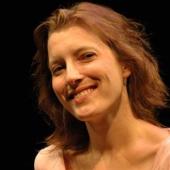Last week I wrote a bit about using Theater as a tool for teaching literacy, and provided a few examples of organizations that were effectively helping students with their literacy skills using theater techniques. Well, it turns out that not only can theater help with literacy; it can also be used to teach other subjects as well.
Arts integration can be differentiated from arts education in that the main objective isn’t necessarily the arts discipline itself. Instead, arts integration’s main goal is to use arts to educate students in traditional academic disciplines. In arts integration, music might be used to teach math, or dance could be used to teach physics. In an arts integration residency in theater, students might perform scenes based on historical events. Yes, the instructor might provide guidance on their acting technique, but the overall goal would be for students to understand the material.
This is not to say that there is anything wrong with learning how to act for the sake of learning how to act. Or learning how to paint, or play the violin. We as artists know that there is intrinsic value in perfecting these disciplines—we know that working toward excellence in an art form is an end in itself.
But research shows that arts also can be used as a tool for other kinds of learning, particularly with students that don’t perform well in traditional academic settings. And let’s be honest—in an economic downturn, arts funding is the first thing that gets cut, so proving that arts integration is a viable means to boost academic performance becomes an urgent matter.
Act and your test scores increase
The Center For Applied Research and Educational Improvement (CAREI), a program of The University of Minnesota, has done extensive research on the topic of arts integration, with some very interesting findings. While the results may vary depending on both the discipline involved and the subject being taught, the overall results of their research is that the arts do indeed boast academic performance in a number of subjects.
For example, CAREI
found that third grade math scores increased by 1.08 points for every "unit increase" in the extent their teacher integrated arts into math lessons. (A "unit" is describes a distinct amount of arts added to a classroom.) For fifth-grade boys in the free- and reduced-price lunch program, their scores increased by 1.32 points for every unit increase in their teacher's use of arts integration in mathematics lessons. The study also found that the amount of arts integration was important. When it was used “a lot,” it had more of an effect than when it was used “very little."
The arts programming that CAREI used to test the effectiveness of arts integration curriculum was the
Arts for Academic Achievement Program with the Minneapolis Public Schools. With funding from the Annenberg Foundation, CAREI completed their first evaluation of the AAA program in 2002. Funding from the Annenberg Foundation ended at that time, but with other funding sources, AAA contracted CAREI to undertake another study of the program which CAREI completed in 2007.
Perpich Center leads the way
The Perpich Center for Arts Education (PCAE) also is at the forefront of arts integration. They have a program called
Arts Courses for Educators (ACE) which trains teachers how to integrate dance, media arts, and theater arts into school curriculum. Teachers from all over the state work with specialists to find creative ways to utilize art tools for non-arts classes.
Last year I interviewed Laura Grant, a dancer and arts educator who had gone through the ACE program in dance. She said that they learned movement that helped kids who were falling through the cracks because it gave them more confidence and took them out of their comfort zones. Grant said that one 6th grade math teacher used movement to teach a lesson on positive and negative numbers, and that afterwards their test scores were higher than her class the previous year.
A national resource for arts integration is the
Arts Education Partnership, which compiles research done all around the country examining the relationship between arts learning and academic achievement.




